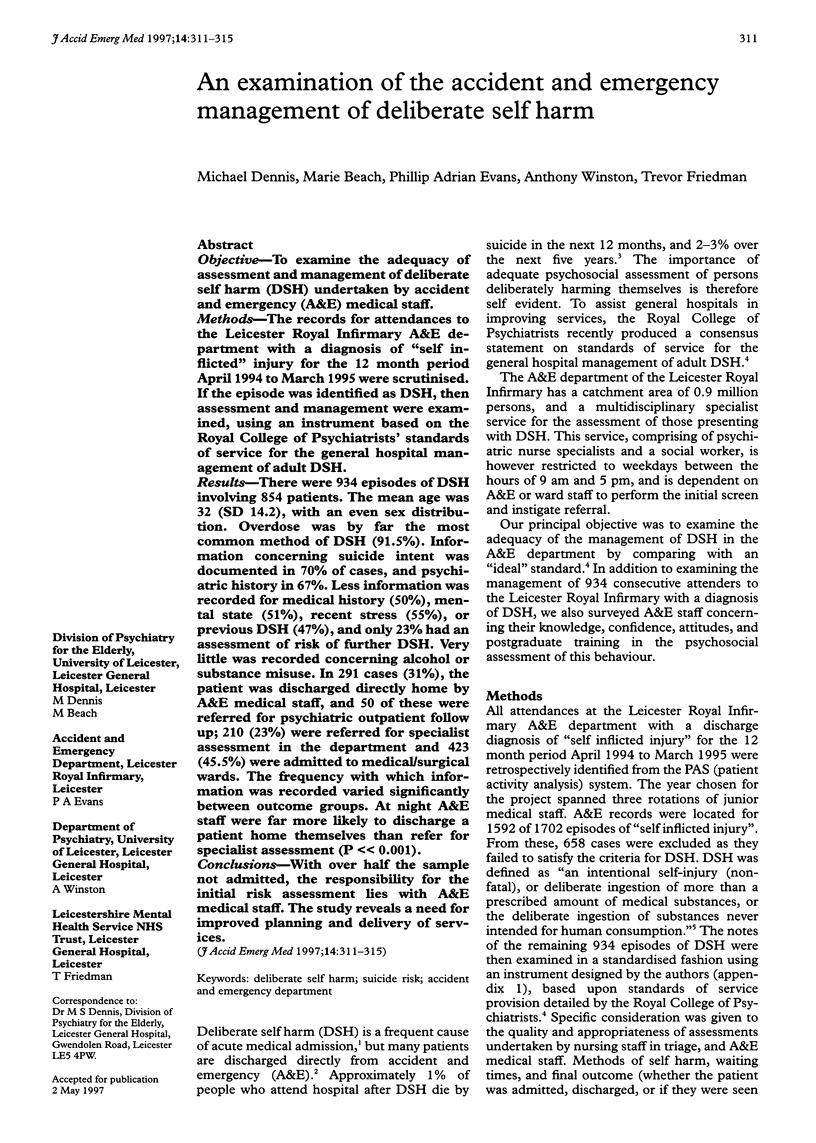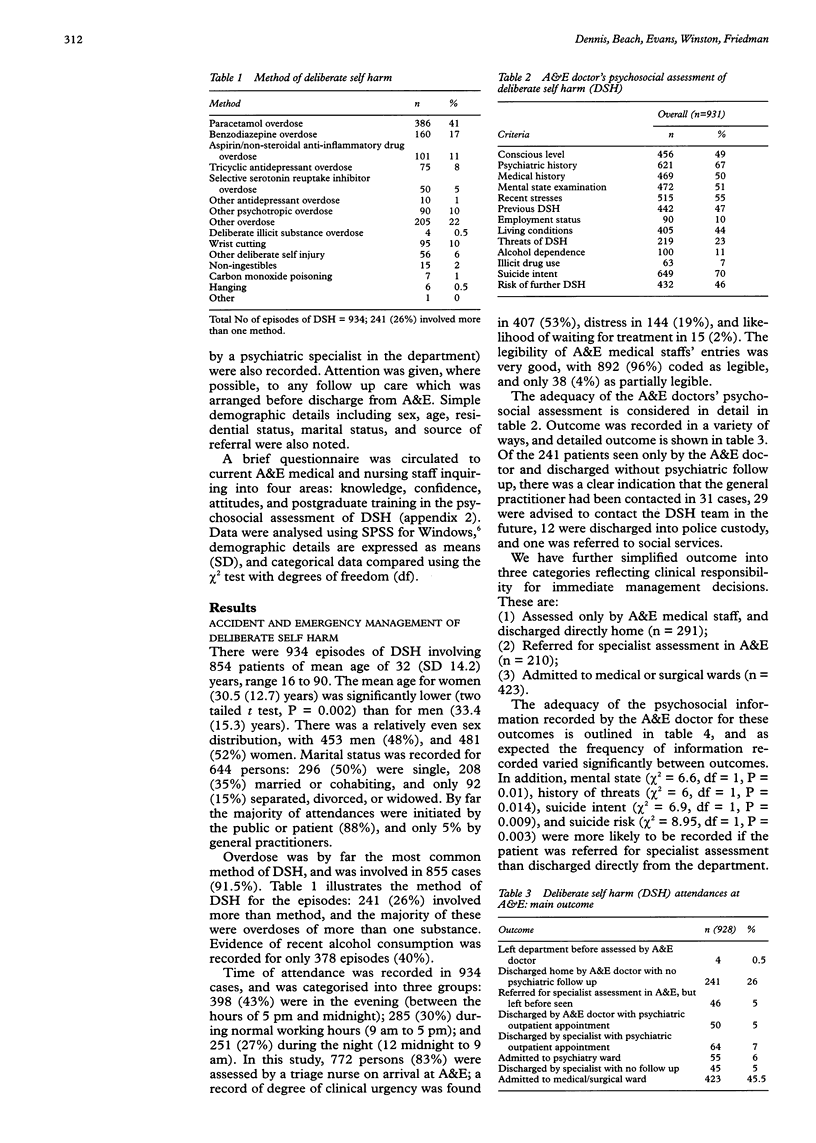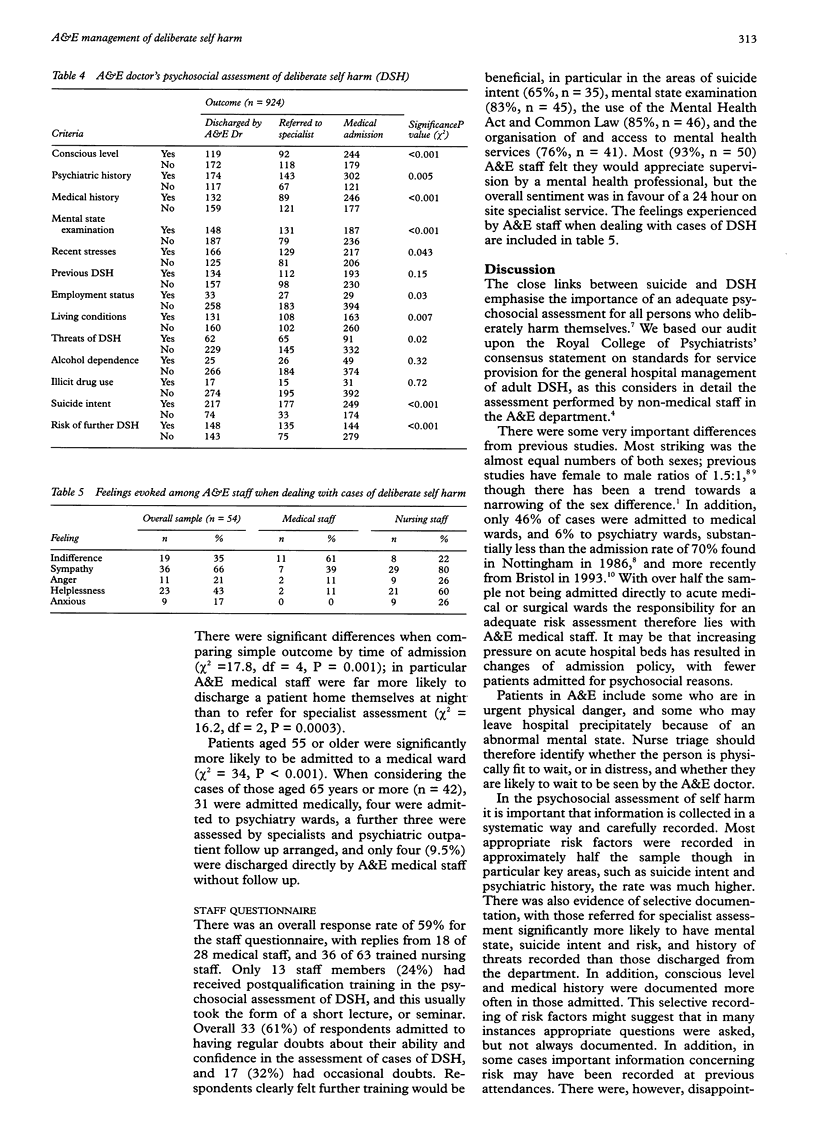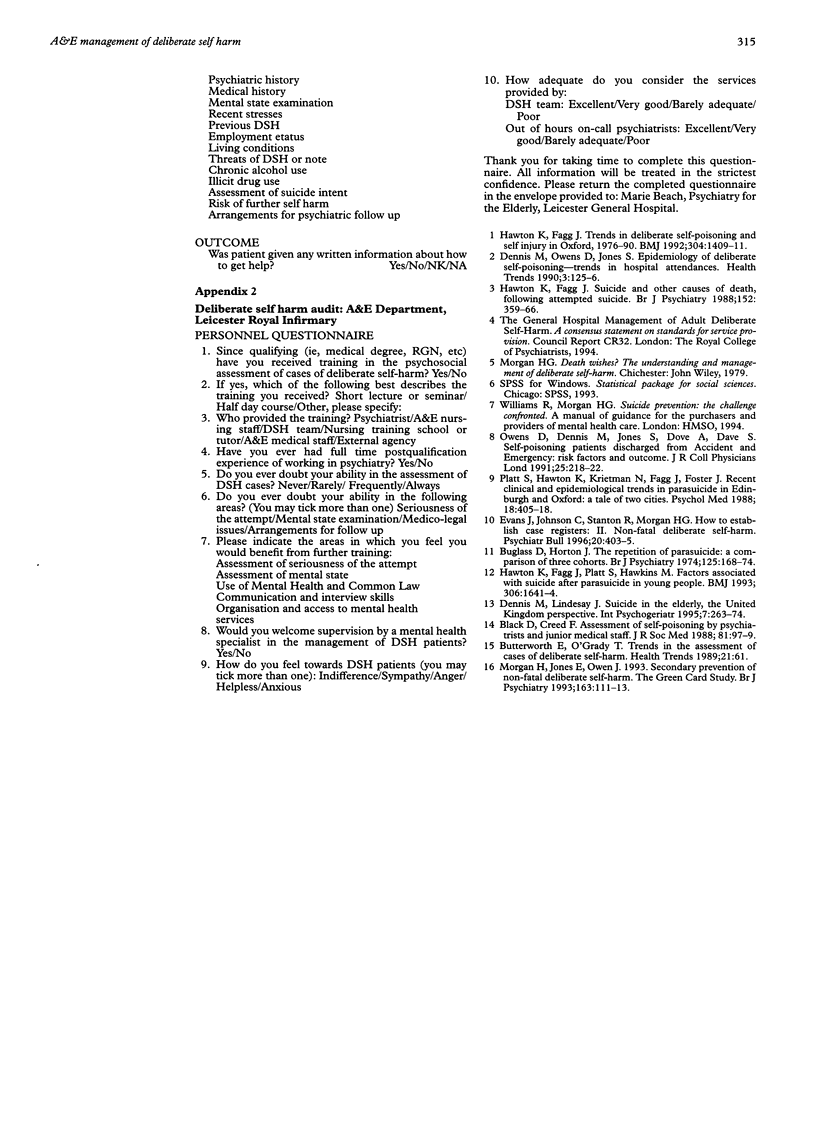Abstract
OBJECTIVE: To examine the adequacy of assessment and management of deliberate self harm (DSH) undertaken by accident and emergency (A&E) medical staff. METHODS: The records for attendances to the Leicester Royal Infirmary A&E department with a diagnosis of "self inflicted" injury for the 12 month period April 1994 to March 1995 were scrutinised. If the episode was identified as DSH, then assessment and management were examined, using an instrument based on the Royal College of Psychiatrists' standards of service for the general hospital management of adult DSH. RESULTS: There were 934 episodes of DSH involving 854 patients. The mean age was 32 (SD 14.2), with an even sex distribution. Overdose was by far the most common method of DSH (91.5%). Information concerning suicide intent was documented in 70% of cases, and psychiatric history in 67%. Less information was recorded for medical history (50%), mental state (51%), recent stress (55%), or previous DSH (47%), and only 23% had an assessment of risk of further DSH. Very little was recorded concerning alcohol or substance misuse. In 291 cases (31%), the patient was discharged directly home by A&E medical staff, and 50 of these were referred for psychiatric outpatient follow up; 210 (23%) were referred for specialist assessment in the department and 423 (45.5%) were admitted to medical/surgical wards. The frequency with which information was recorded varied significantly between outcome groups. At night A&E staff were far more likely to discharge a patient home themselves than refer for specialist assessment (P << 0.001). CONCLUSIONS: With over half the sample not admitted, the responsibility for the initial risk assessment lies with A&E medical staff. The study reveals a need for improved planning and delivery of services.
Full text
PDF




Selected References
These references are in PubMed. This may not be the complete list of references from this article.
- Black D., Creed F. Assessment of self-poisoning patients by psychiatrists and junior medical staff. J R Soc Med. 1988 Feb;81(2):97–99. doi: 10.1177/014107688808100216. [DOI] [PMC free article] [PubMed] [Google Scholar]
- Buglass D., Horton J. The repetition of parasuicide: a comparison of three cohorts. Br J Psychiatry. 1974 Aug;125(0):168–174. doi: 10.1192/bjp.125.2.168. [DOI] [PubMed] [Google Scholar]
- Dennis M. S., Lindesay J. Suicide in the elderly: the United Kingdom perspective. Int Psychogeriatr. 1995 Summer;7(2):263–274. doi: 10.1017/s104161029500202x. [DOI] [PubMed] [Google Scholar]
- Dennis M., Owens D., Jones S. Epidemiology of deliberate self-poisoning: trends in hospital attendances. Health Trends. 1990;22(3):125–126. [PubMed] [Google Scholar]
- Hawton K., Fagg J., Platt S., Hawkins M. Factors associated with suicide after parasuicide in young people. BMJ. 1993 Jun 19;306(6893):1641–1644. doi: 10.1136/bmj.306.6893.1641. [DOI] [PMC free article] [PubMed] [Google Scholar]
- Hawton K., Fagg J. Suicide, and other causes of death, following attempted suicide. Br J Psychiatry. 1988 Mar;152:359–366. doi: 10.1192/bjp.152.3.359. [DOI] [PubMed] [Google Scholar]
- Hawton K., Fagg J. Trends in deliberate self poisoning and self injury in Oxford, 1976-90. BMJ. 1992 May 30;304(6839):1409–1411. doi: 10.1136/bmj.304.6839.1409. [DOI] [PMC free article] [PubMed] [Google Scholar]
- Morgan H. G., Jones E. M., Owen J. H. Secondary prevention of non-fatal deliberate self-harm. The green card study. Br J Psychiatry. 1993 Jul;163:111–112. doi: 10.1192/bjp.163.1.111. [DOI] [PubMed] [Google Scholar]
- Owens D., Dennis M., Jones S., Dove A., Dave S. Self-poisoning patients discharged from accident and emergency: risk factors and outcome. J R Coll Physicians Lond. 1991 Jul;25(3):218–222. [PMC free article] [PubMed] [Google Scholar]
- Platt S., Hawton K., Kreitman N., Fagg J., Foster J. Recent clinical and epidemiological trends in parasuicide in Edinburgh and Oxford: a tale of two cities. Psychol Med. 1988 May;18(2):405–418. doi: 10.1017/s0033291700007959. [DOI] [PubMed] [Google Scholar]


